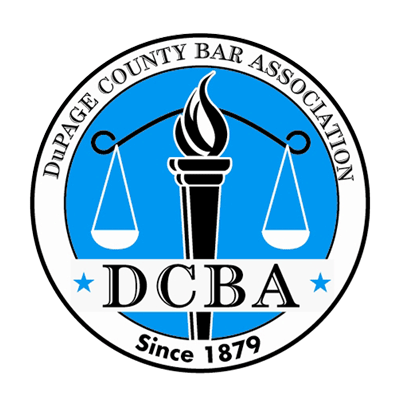
With winter upon us, it’s time to prepare for the snow and ice that we’re all familiar with here in Illinois. According to the National Weather Service, the “Seasonal Mean Snow” for the Chicago metropolitan area is 28.1 inches from December to February. Sidewalks and roads turned icy and slick make walking and driving much more dangerous in the winter months. It’s not uncommon to fall on icy driveways, sidewalks, and stairways.
Accidents on highways are also frequent and sometimes result in hundreds of car accidents over the course of a day or even a morning. In these instances, the question becomes, is anyone liable for the injuries? If so, who is liable? Although the answers to those questions are similar for both slip and fall accidents and auto accidents, they aren’t the same. So, let’s take a look at each separately.
Slip and Fall Accidents
Winter mixes of ice, snow, and freezing rain can quickly accumulate on roads, sidewalks, and in parking lots. Black ice is especially dangerous, due in part to how invisible it is. If you slip and fall on ice or snow, you could injure bones or even end up with a traumatic brain injury. These injuries can take a long time to heal and impact your day to day living, both personally and professionally. In Illinois, the law protects property owners and managers if something happens where an individual slips and falls due to a “natural accumulation” of ice or snow. This means that a property owner isn’t required to shovel or remove winter precipitation or even to put up signs advising caution.
Who is Liable?
If a property owner shovels their property, but does a less than ideal job, they are still protected by the Snow and Ice Removal Act. This means that both commercial and residential owners are not generally liable if naturally accumulated snow remained on the premises. The good news, if you’ve been injured by snow or ice on a property, is that sometimes there is liability on the part of the owners. This occurs if the injury is from an “unnatural accumulation” of snow or ice. What is an unnatural accumulation of snow or ice? Well, some examples of an “unnatural accumulation” include:
- Ignoring code violations and thereby creating winter hazards
- Maintaining the property in such a way that, through negligence, they compound or contribute to hazardous circumstances.
Skidding on Black Ice While Driving
If you are driving and hit a patch of black ice, it can be terrifying as your car skids and goes out of your control. Black ice can form due to several factors, including sudden temperature drops (often in the early morning or early evening) as any ice that has thawed (or rain that has fallen) refreezes. Low-light areas can make it challenging to see black ice when you’re driving. If you’re hit by a driver whose car skids on black ice, it’s important to take pictures of the ice and other factors that may have influenced the accident. Only do this if you’re physically able to move.
Who Holds Liability for Black Ice Skidding?
When the weather changes, drivers should likewise adjust how they are driving. Safe and attentive driving during winter weather is critical. Although you may think you don’t hold responsibility for an accident due to losing control on black ice, most insurance companies would deem you liable. If another driver hits you, they may be liable for the accident, and you may be able to recover compensation for any injuries or damage
Do I Need an Attorney?
If you’ve been involved in either a black ice accident or a slip and fall accident, an experienced personal injury attorney can often help you obtain a favorable outcome. They will be able to advise you as to whether or not you have a case and can ensure that your claim receives the attention it deserves. Cullotta Bravo Law’s attorneys have a proven track record of success and millions of dollars awarded as settlements. Call us at 630-898-7800 or contact us online for a free consultation. We only collect a fee if we resolve your case through a settlement or trial.





